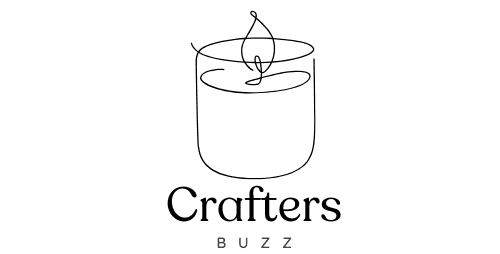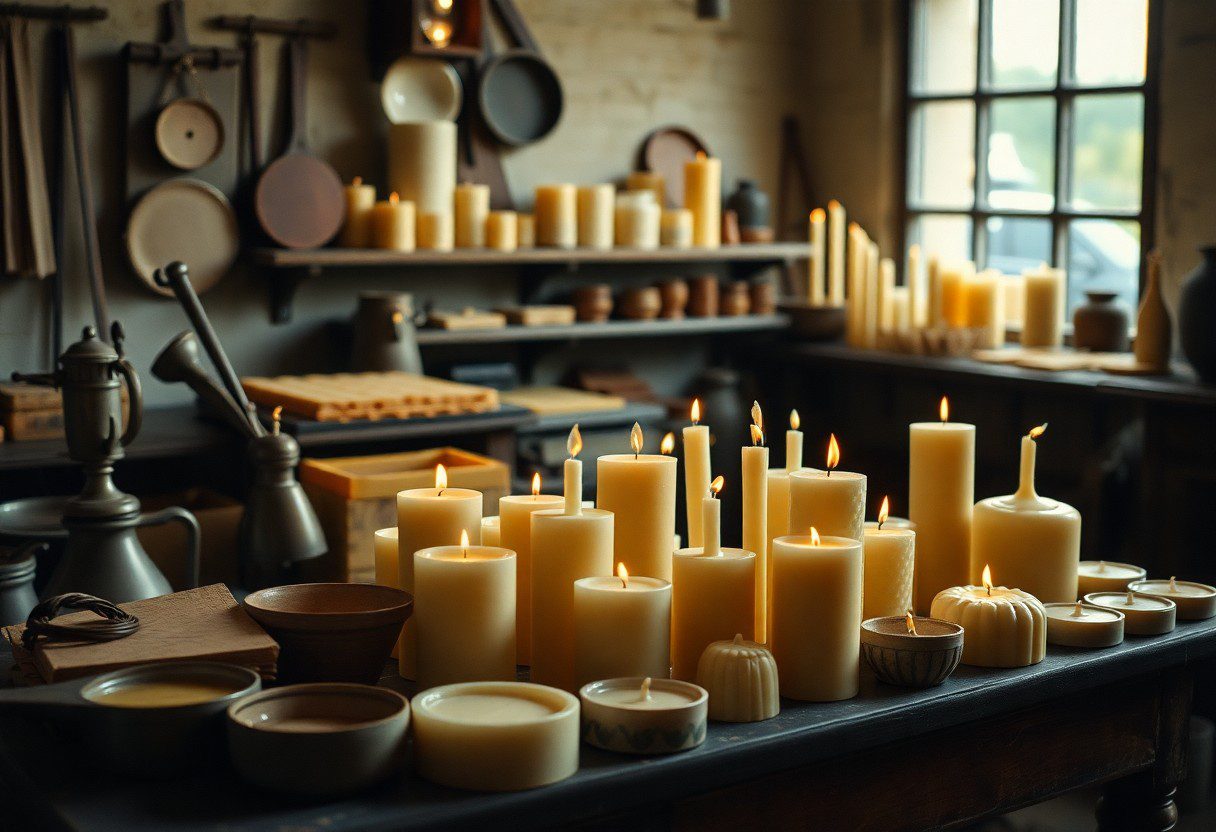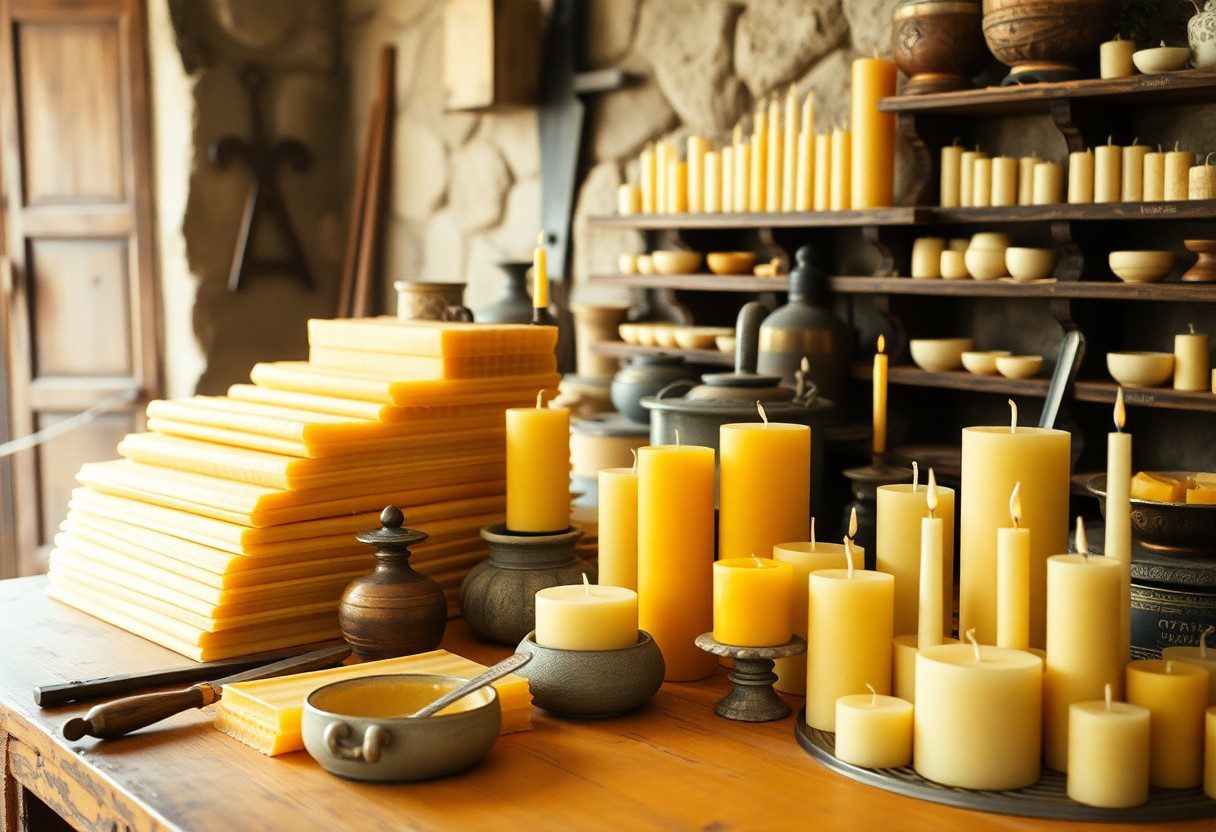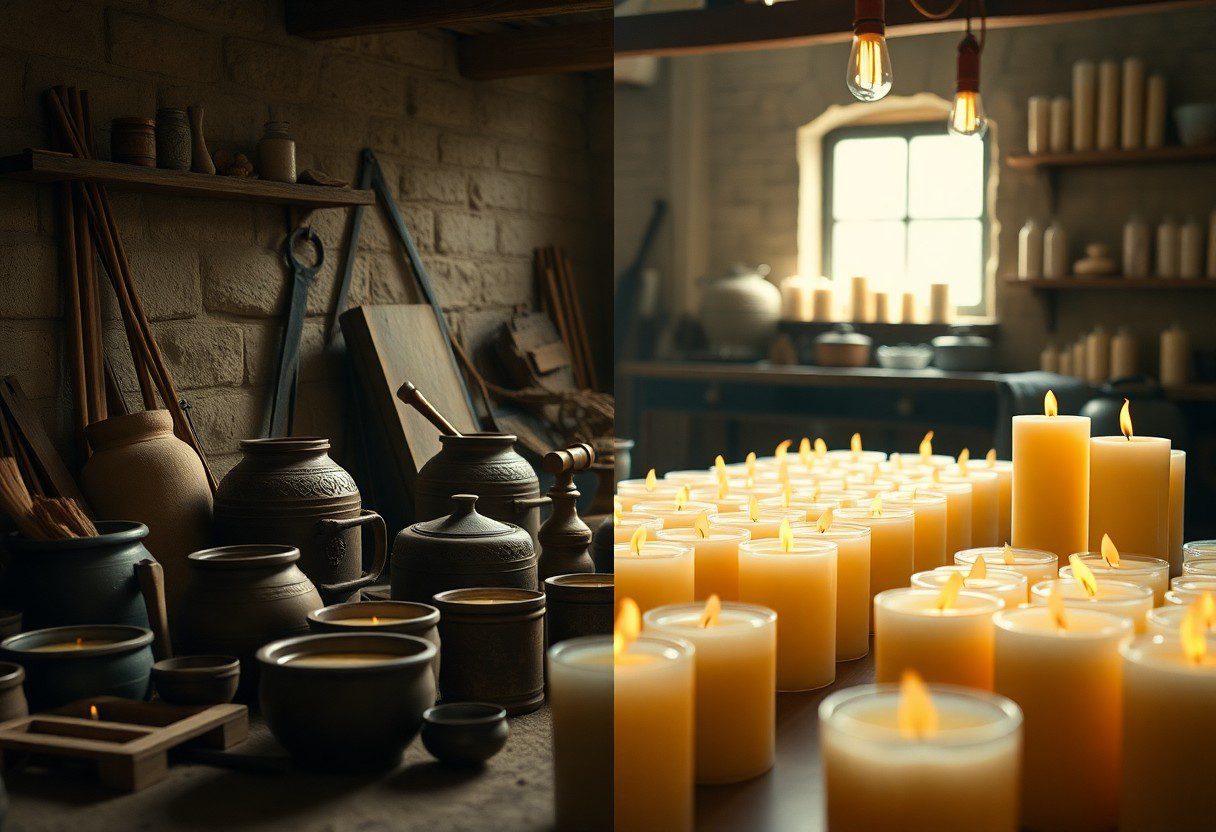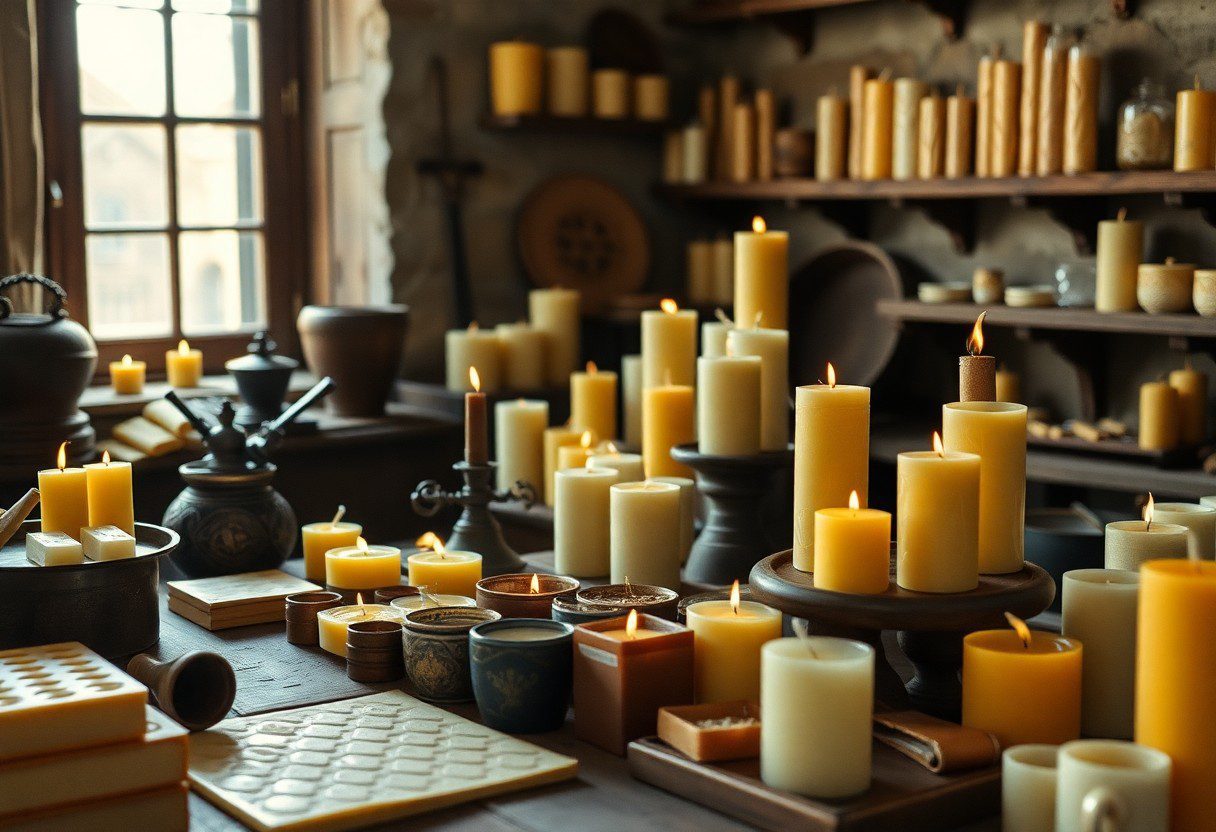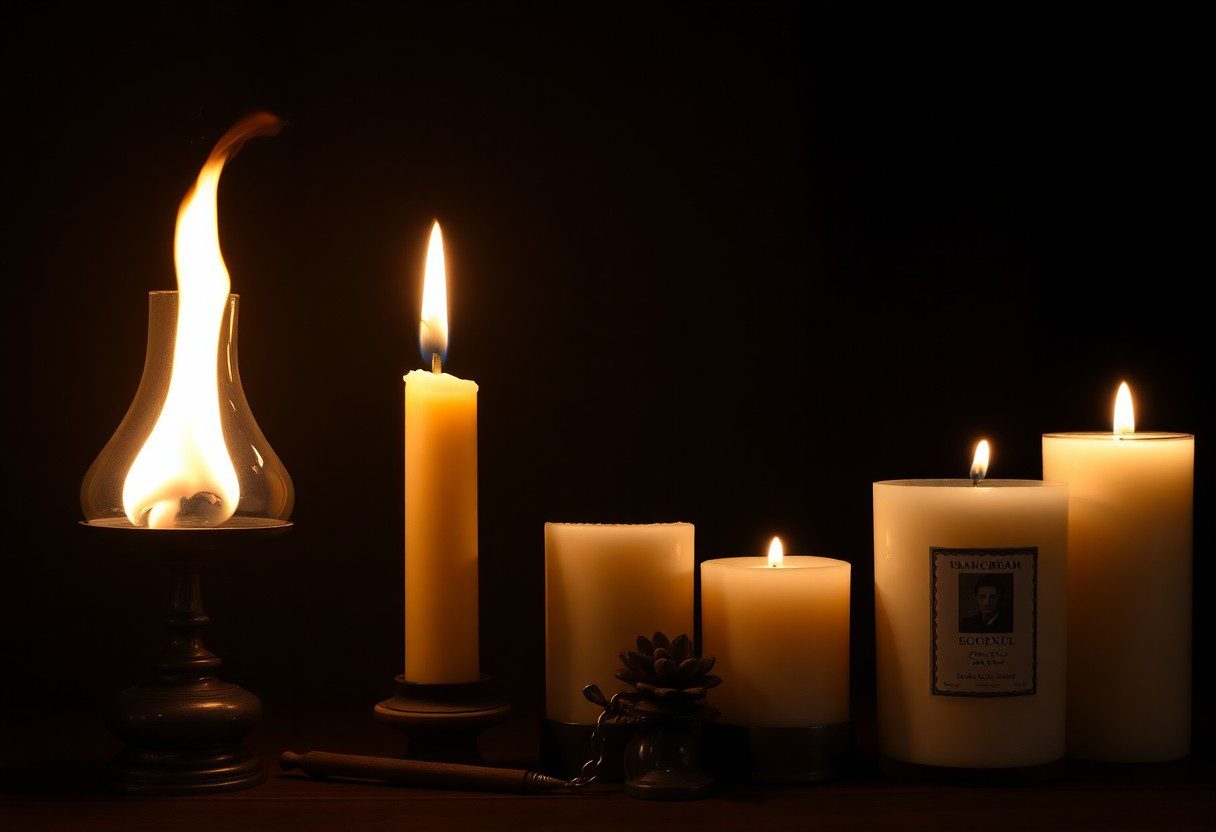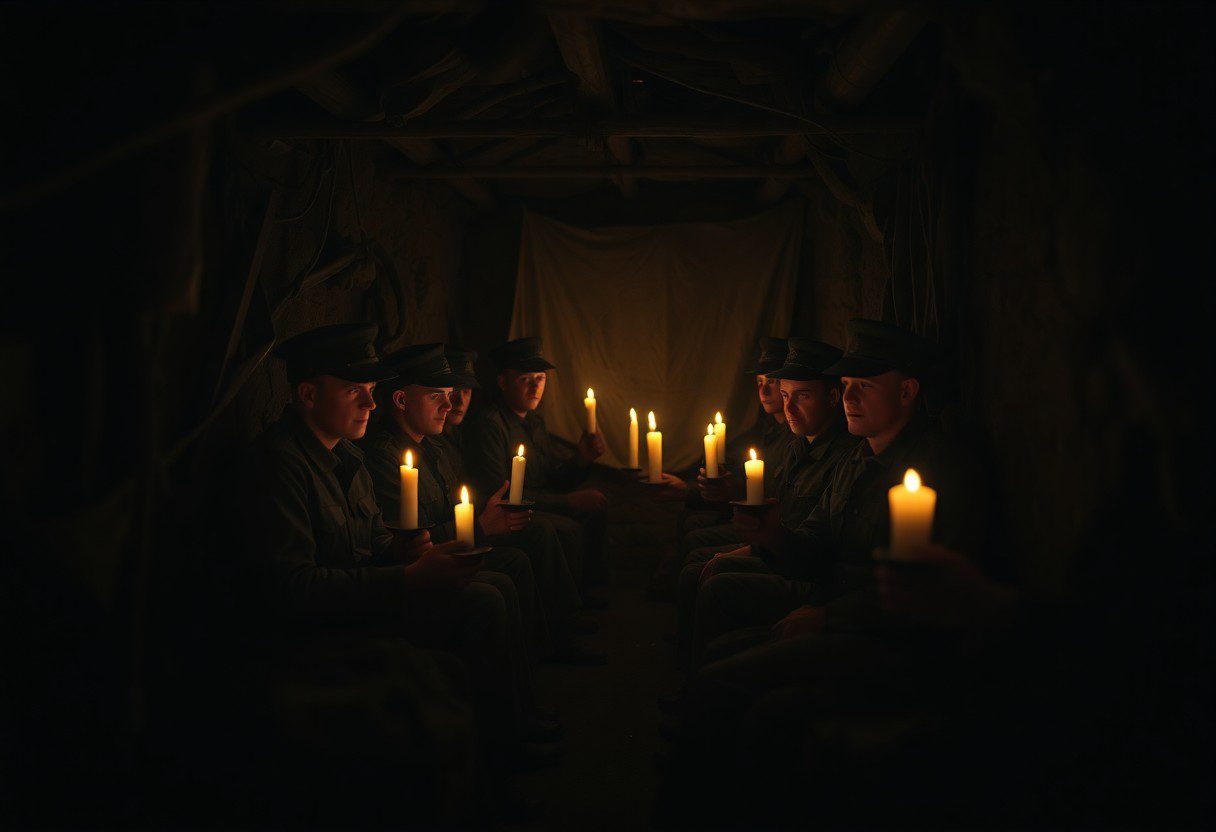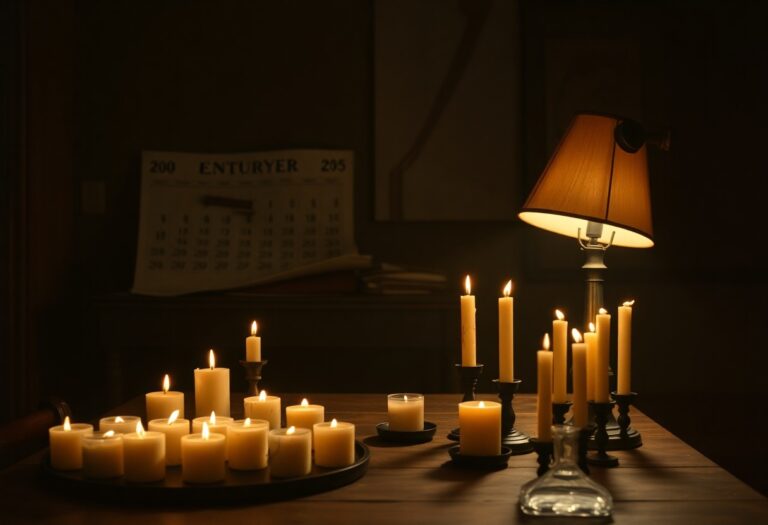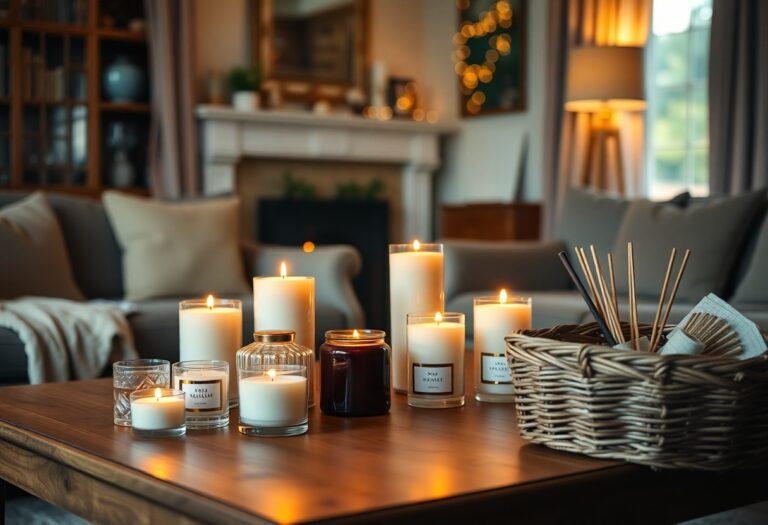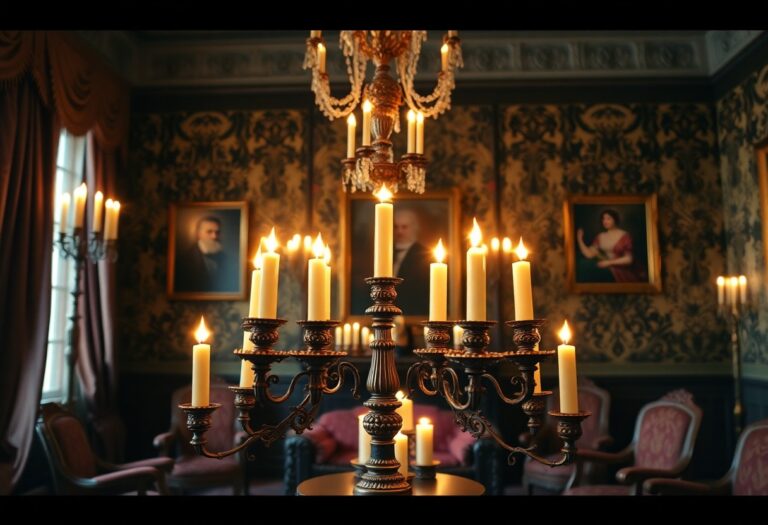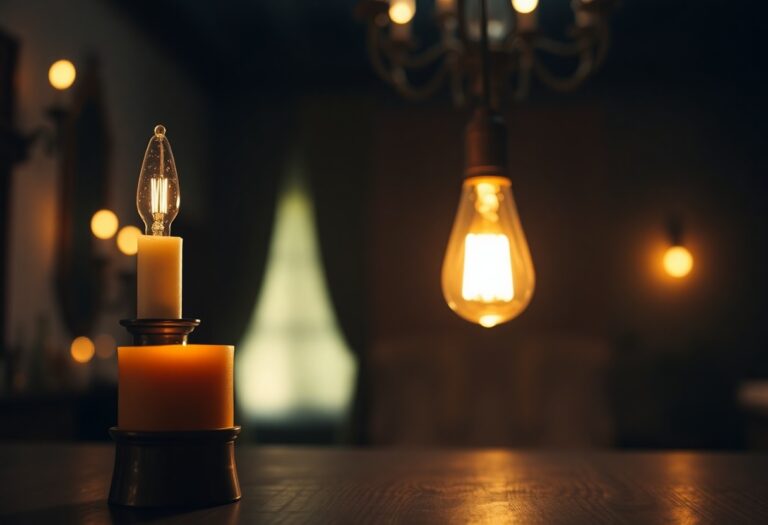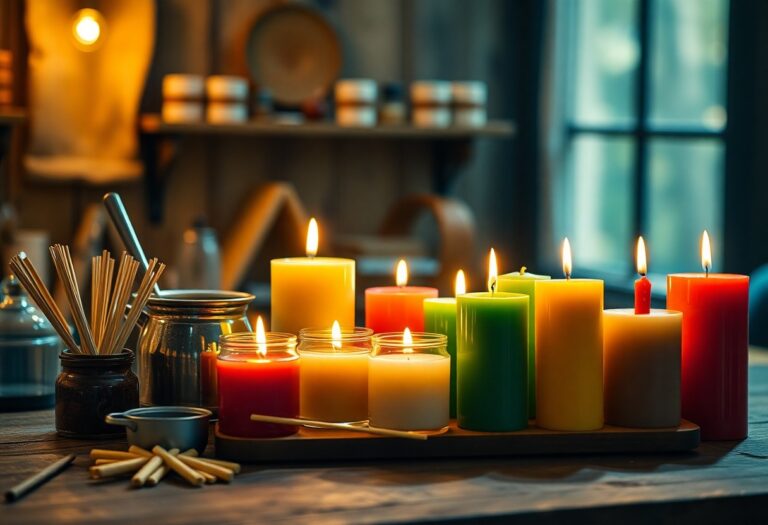Candle Craftsmanship – Exploring The Art Of Candle Making In History
You hold in your hands a piece of history every time you light a candle. The art of candle making has evolved through ages, transitioning from a practical necessity for illumination to a cherished form of artistic expression and ambiance. By exploring the history of candle craftsmanship, you uncover the dangerous methods used by early artisans, the intricate techniques they perfected, and the profound cultural significance that candles have held throughout time. Join us on this enlightening journey to understand how this craft has shaped our lives and continues to illuminate our spaces.
The Historical Evolution of Candle Making
Your journey through the history of candle making reveals a rich tapestry of innovation shaped by the needs and resources of various cultures. Between the ancient civilizations of Egypt, China, and Rome, candles played a vital role not only in providing light but also in religious rituals and cultural practices. The earliest candles were less refined, crafted from natural materials such as animal fats and beeswax, which illuminated the darkness and set the stage for a blossoming craft. In these early societies, the act of candle making was often intertwined with spiritual significance, as the flickering flame symbolized hope and the divine.
Ancient Civilizations and Early Uses
Your understanding of candle making deepens as you explore its origins. Civilizations like the Egyptians utilized rushes soaked in animal fat, while the Chinese advanced the craft with their use of molds and wax derived from insects. These innovations highlighted both the artistic and utilitarian aspects of candle production, setting the groundwork for methods that would evolve over the centuries. As trade expanded, so did the influence of different techniques and materials, enabling the candle making process to spread beyond its original confines and into new societies.
The Middle Ages and the Rise of Tallow Candles
Your exploration of candle making takes a fascinating turn during the Middle Ages, a period marked by the wide adoption of tallow candles. Civilizations in Europe saw a significant shift with the increased use of animal fats—rendered from livestock—as a primary ingredient. Although these tallow candles were less fragrant and produced more soot compared to their beeswax counterparts, they offered a durable and affordable source of light for the masses. This period witnessed industrial advancements that allowed for mass production and availability, making candles important for illuminating homes, churches, and public spaces alike, regardless of socioeconomic status.
Plus, the transformation of tallow candles during this era not only reflected practical needs but also innovative craftsmanship. Using various molds, skilled candle makers improved the production process, allowing for variations in size and shape that catered to different lighting needs. These developments paved the way for the specialization within the craft and contributed to the candle’s emergence as a pivotal household item important for both daily life and special occasions.
Cultural Significance of Candles
Any discussion about candles is incomplete without addressing their rich cultural significance. Candles have been integral to various traditions and festivities across the globe, representing not just illumination but also connection to deeper meanings and practices. You may discover how the crafting and use of candles have evolved over centuries, embodying the unique customs of different cultures. For more insights, check out The Art of Candle-Making: Exploring the Craftsmanship ….
Rituals and Traditions Across Different Cultures
With a history steeped in ritual, various cultures have employed candles in unique ways, often linking them to significant life events and ceremonies. From the simple act of lighting a candle in celebration to grand displays during festivals, candles serve as symbols of hope, remembrance, and unity. You might find it fascinating how, in many cases, the flame can represent the presence of spirits or ancestors, creating a bridge between the physical and spiritual realms.
Candles in Religion and Spirituality
An exploration of candles in a religious context reveals their profound role as conduits of devotion and meditation. Across multiple faiths, candles are lit during prayers, rituals, and services to symbolize enlightenment, purification, and commitment. Whether it’s the Advent candles of Christianity or the Yahrzeit candles in Judaism, each light has its own story, imbued with meaning and intention that enriches your spiritual experience.
Also, the act of lighting a candle can be seen as a personal reflection or offering, providing a moment of tranquility amid the chaos of daily life. You might find the calming flicker of a candle during prayer or meditation to foster a sense of peace and connection to a higher power. Whether you are lighting candles for personal reflection or as part of a communal ritual, their positive energy can help manifest your intentions and create sacred spaces for contemplation.
The Science of Candle Making
If you have ever been captivated by the warm glow of a candle or the enticing aromas that waft from them, it’s important to understand that candle making is not merely an art—it is a scientific endeavor as well. By grasping the principles behind the materials and techniques involved, you can enhance your candle-making skills and create candles that not only look beautiful but also burn effectively and safely.
Materials and Ingredients: Waxes, Wicks, and Fragrances
Along your journey into candle making, you will discover a variety of materials that play significant roles in the final product. The choice of wax greatly influences the burning behavior and aesthetic qualities of your candles. For instance, paraffin wax is a popular choice due to its excellent scent throw, while soy wax and beeswax are favored for their natural properties and sustainability. In addition to wax, selecting the right wick is important for achieving a proper burn; it must be carefully matched to the wax type and candle size to ensure an even flame without excessive soot. Furthermore, fragrances can elevate your candle experience, although it’s vital to select high-quality, flame-safe oils that blend well with your base wax to avoid any undesirable effects during burning.
Techniques: Pouring, Molding, and Dipping
On your path to mastering candle making, you will encounter various techniques like pouring, molding, and dipping, each with its nuances. Pouring is the most common method, where molten wax is heated to a specific temperature and then poured into a vessel or mold. Molding allows for more intricate shapes, often providing a striking visual appeal. Dipping, a traditional technique, involves repeatedly immersing a wick into molten wax, creating layered candles that reflect craftsmanship and artistry.
Waxes serve as the foundation of your candle crafting. Each type offers unique characteristics; for example, beeswax is not only a renewable resource but also burns longer and cleaner than many synthetic options. You will want to explore combinations of waxes or experiment with additives like stearin to enhance hardness or opacity. When experimenting, always prioritize safety by working in a well-ventilated area and adhering to proper temperature guidelines to prevent any hazards associated with overheated wax.
Modern Trends in Candle Craftsmanship
After years of mass production and homogenous designs, modern candle craftsmanship is experiencing a revival that embraces individuality and creativity. You’ll find that today’s candles come in a myriad of forms, colors, and scents, reflecting a diverse range of styles and personal preferences. This shift towards handmade, unique items gives an opportunity for you to support local artisans while enjoying distinctive pieces that add personality to your space. In this era of candle making, you are likely to encounter innovative techniques, blends of fragrances, and ingredients that transform the experience of lighting a candle into something truly exceptional.
Sustainability and Eco-Friendly Options
To address the increasing concern for the environment, many candle makers are turning to sustainable practices and eco-friendly materials. You may discover that more artisans are choosing natural waxes, such as soy or beeswax, which are not only biodegradable but also produce less soot than their paraffin counterparts. Furthermore, these eco-conscious artisans typically prioritize recycled packaging and reusable containers, appealing to consumers who wish to minimize their ecological footprint. By opting for candles crafted with sustainability in mind, you contribute to a greener planet while enjoying an artisanal product.
In addition to the base materials, the rise of eco-friendly scents made from vital oils instead of synthetic fragrances also aligns with this trend. To enhance your sensory experience without sacrificing your values, you can choose candles infused with botanical extracts that provide both benefits for your well-being and a more organic aroma. These thoughtful choices allow you to indulge in the delightful ambiance created by candles, all while supporting practices that are friendly to the environment.
The Rise of Artisan Candle Makers
About the resurgence of artisan candle makers in the industry, this trend highlights a strong interest in authenticity and craftsmanship. You may find that individuals are more inclined to seek out small-batch candles that feature unique scent profiles and artistic designs. This shift towards embracing artisanship not only celebrates creativity but also fosters a connection between consumers and makers. Support for local businesses has never been more prominent, and with the demand for handcrafted products on the rise, you are likely to enjoy a richer selection of candles than ever before.
And as you probe into the world of candles, you may also appreciate the stories behind each artisan brand. Many makers share their personal journeys, revealing how their passion for candle making fuels their commitment to quality and sustainability. By selecting artisan candles, you gain insight into the values, culture, and labor that enrich each piece, making your candle choice not just about ambiance, but also a reflection of your own principles and appreciation for craftsmanship. This growing movement means you can curate your space with intention and purpose, contributing not only to your sensory pleasure but also to the support of an artisanal community.
Tools and Equipment for Candle Making
To launch on your candle-making journey, you will first need to familiarize yourself with the vital tools and equipment that lay the foundation for successful crafting. Candle making requires specific tools to ensure that your creations burn beautifully and safely. From melting pots and thermometers to molds and wick trimmers, having the right equipment can transform your candle-making experience. For more in-depth insights, research into The History and Art of Candle Making and understand the evolution of these tools over time.
Essential Tools Every Crafter Needs
Making candles involves a variety of tools that cater to different aspects of the process. Essential items include a double boiler for melting wax, which helps maintain a controlled temperature and prevents burning. Additionally, you’ll need pouring pitchers for a precise transfer of molten wax, wick holders to keep the wick centered during the pouring stage, and a thermometer to monitor the wax’s temperature. Having a sturdy workspace and protection gear, like gloves and eyewear, will enhance your crafting efficiency and safety.
Safety Precautions and Best Practices
Making candles requires attention to safety to ensure a pleasant and risk-free experience in your crafting endeavors. You should always work in a well-ventilated area to avoid inhaling fumes and to keep your workspace free from flammable materials. Use heat-resistant tools and containers to manage hot wax safely, and always monitor your wax temperature closely. Furthermore, you should understand how to properly handle fragrances and dyes, as some may be flammable. Following these practices will help you enjoy your candle-making experience while prioritizing safety.
Due to the nature of candle making, it is vital to take specific safety precautions when handling hot wax and other materials. Always keep a fire extinguisher nearby in case of unexpected flare-ups and never leave melting wax unattended. Make sure you have a first aid kit handy, just in case of minor injuries. These measures create a positive crafting environment where you can focus on your art while ensuring your safety as a top priority.
Summing up
As a reminder, exploring the rich history of candle craftsmanship reveals a fascinating journey that intertwines art, science, and culture. You have learned that candle making has evolved from ancient times, where natural materials were used for illumination, to contemporary practices that embrace both aesthetic beauty and functionality. By understanding the various techniques and styles developed throughout history, you can appreciate how candles have transitioned from utilitarian objects to cherished decorative items in your home.
As you research further into the art of candle making, you can incorporate traditional and modern methods to create your unique creations. Whether you are drawn to the enchanting scents of scented candles or the rustic charm of handmade beeswax varieties, your exploration of this craft opens up avenues for creativity and personal expression. Embracing candle craftsmanship not only connects you to the past but also allows you to illuminate your present and future with personalized artistry.
Q: What is the historical significance of candle making?
A: Candle making has a rich history that dates back thousands of years, serving as one of the primary sources of light before the advent of electricity. In ancient civilizations, such as those in Egypt and Rome, candles were made from natural materials like beeswax and tallow. They played an imperative role in religious rituals, festivals, and daily life, providing illumination and creating ambiance. As cultures evolved, so did candle-making techniques, leading to the widespread use of candles in households for both practical purposes and decorative elements.
Q: What materials have been traditionally used in candle making throughout history?
A: Historically, various materials have been used to craft candles, each offering unique characteristics and burning qualities. In ancient times, beeswax was favored due to its clean burn and pleasant aroma. Tallow, derived from animal fat, was common among lower socioeconomic classes, while in Asia, candles made from rice bran oil became prevalent. With the introduction of paraffin wax in the 19th century, a more accessible and economical option became available. Today, candle makers also explore plant-based waxes such as soy and palm, along with fragrances and dyes to enhance the creative process.
Q: How has candle making evolved in contemporary times?
A: The art of candle making has undergone significant transformation in modern times, evolving from a necessity to a popular craft and artistic expression. Today, homemade candles enjoy a resurgence, with individuals experimenting with scents, colors, and shapes, reflecting personal tastes. Availability of diverse materials and advanced techniques allows for innovative designs, such as gel candles and embedded elements. Furthermore, candle making has become a therapeutic activity for many people, enabling them to engage in mindfulness while creating customized items for their homes or as gifts.
